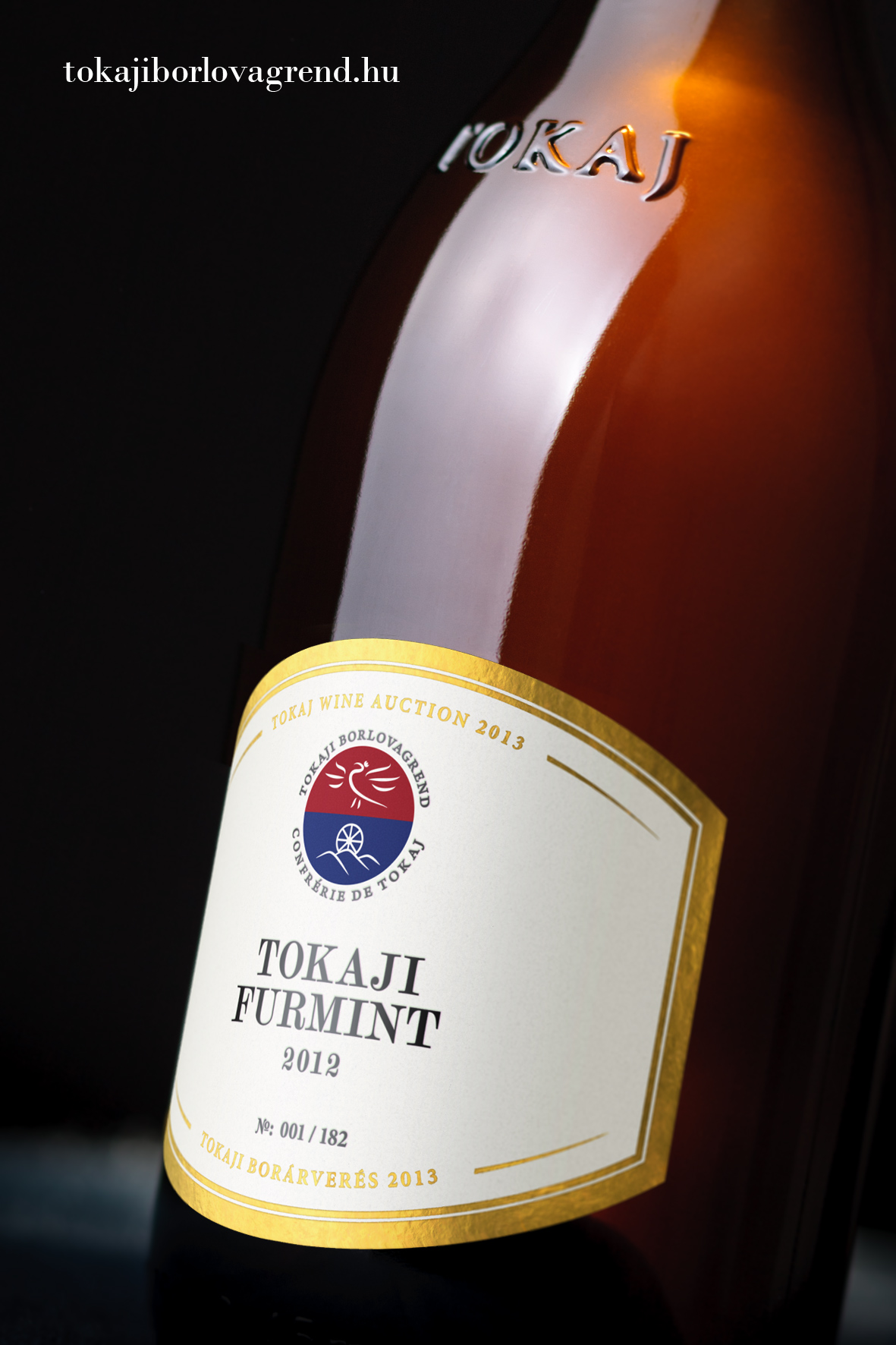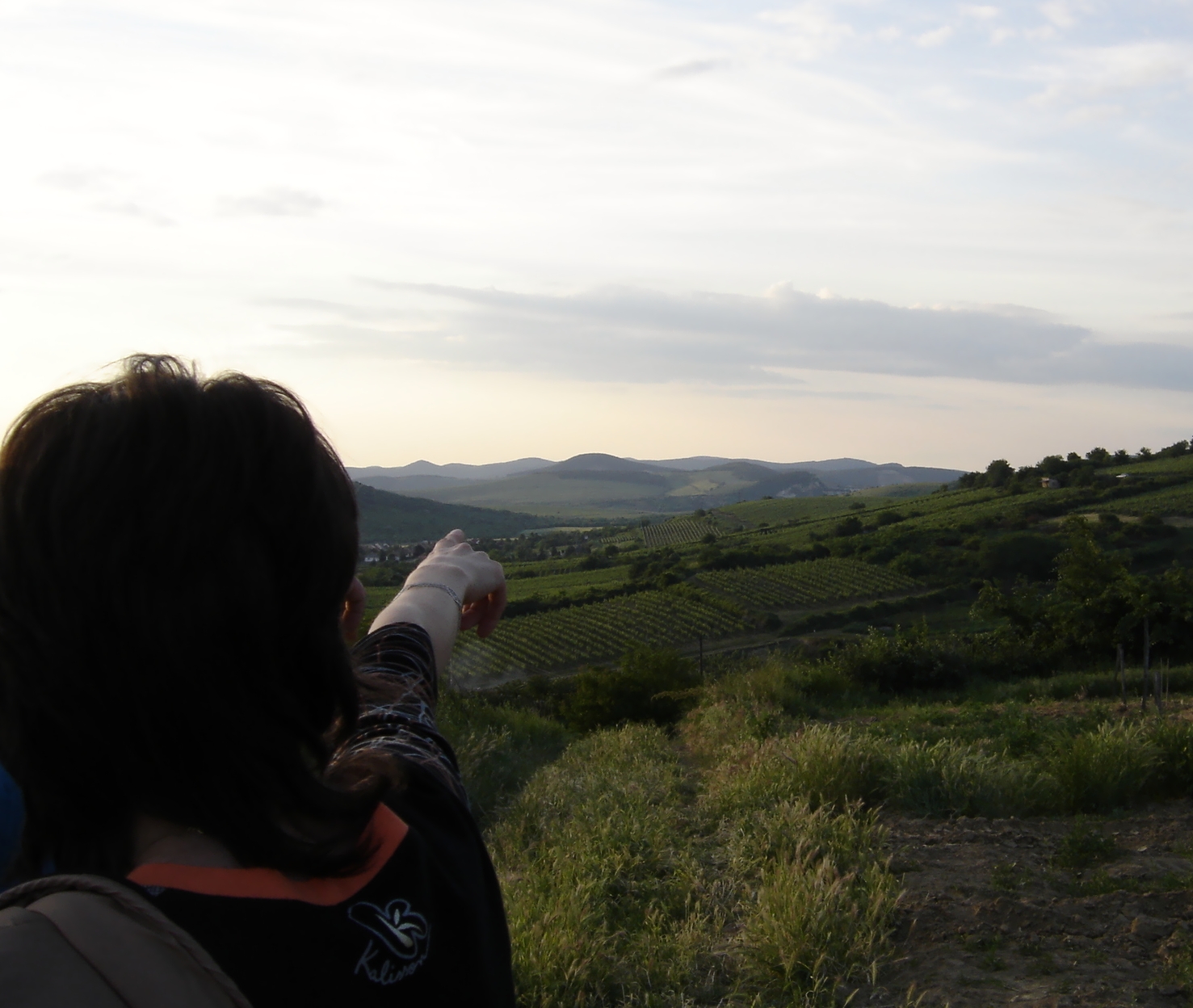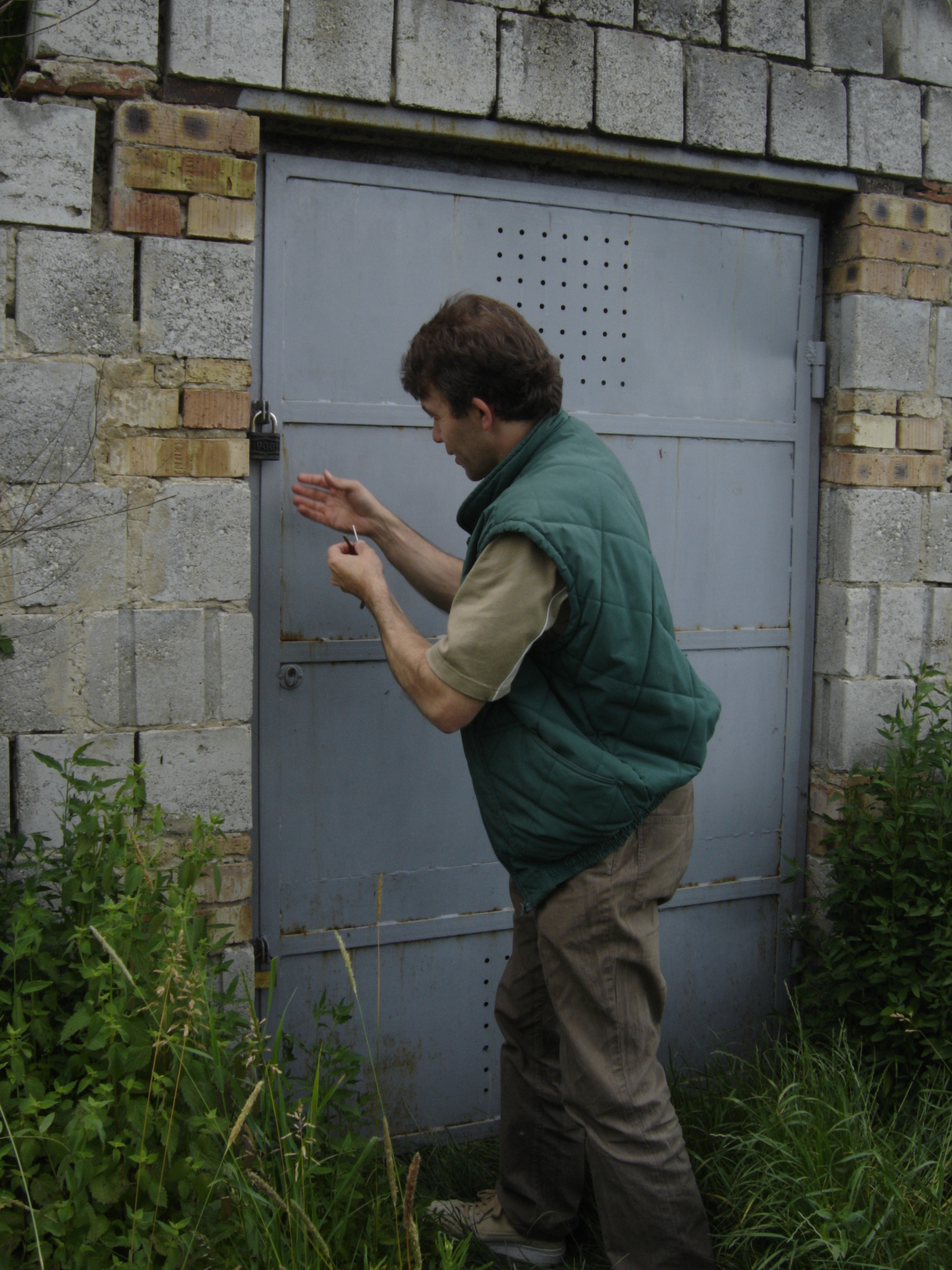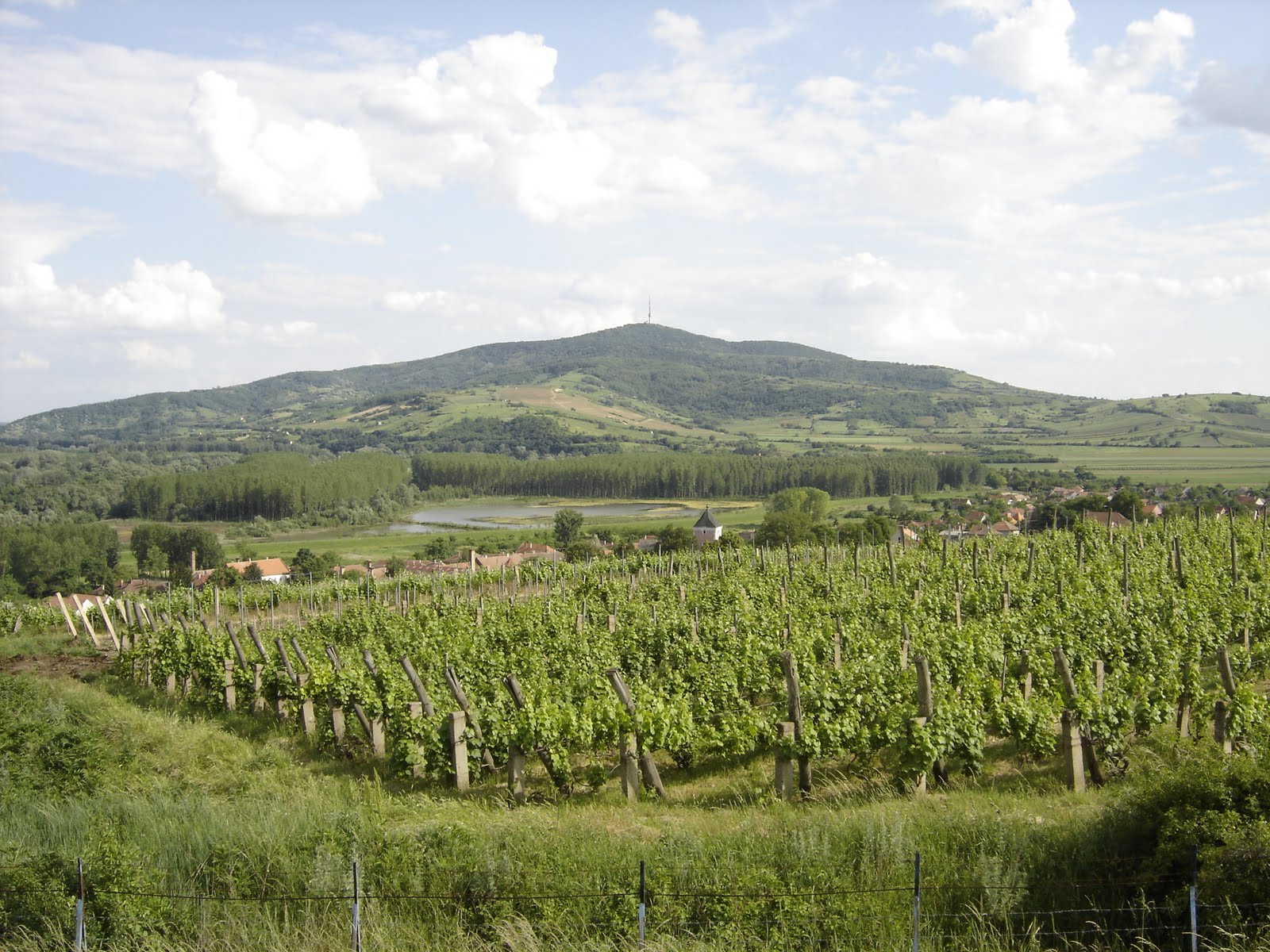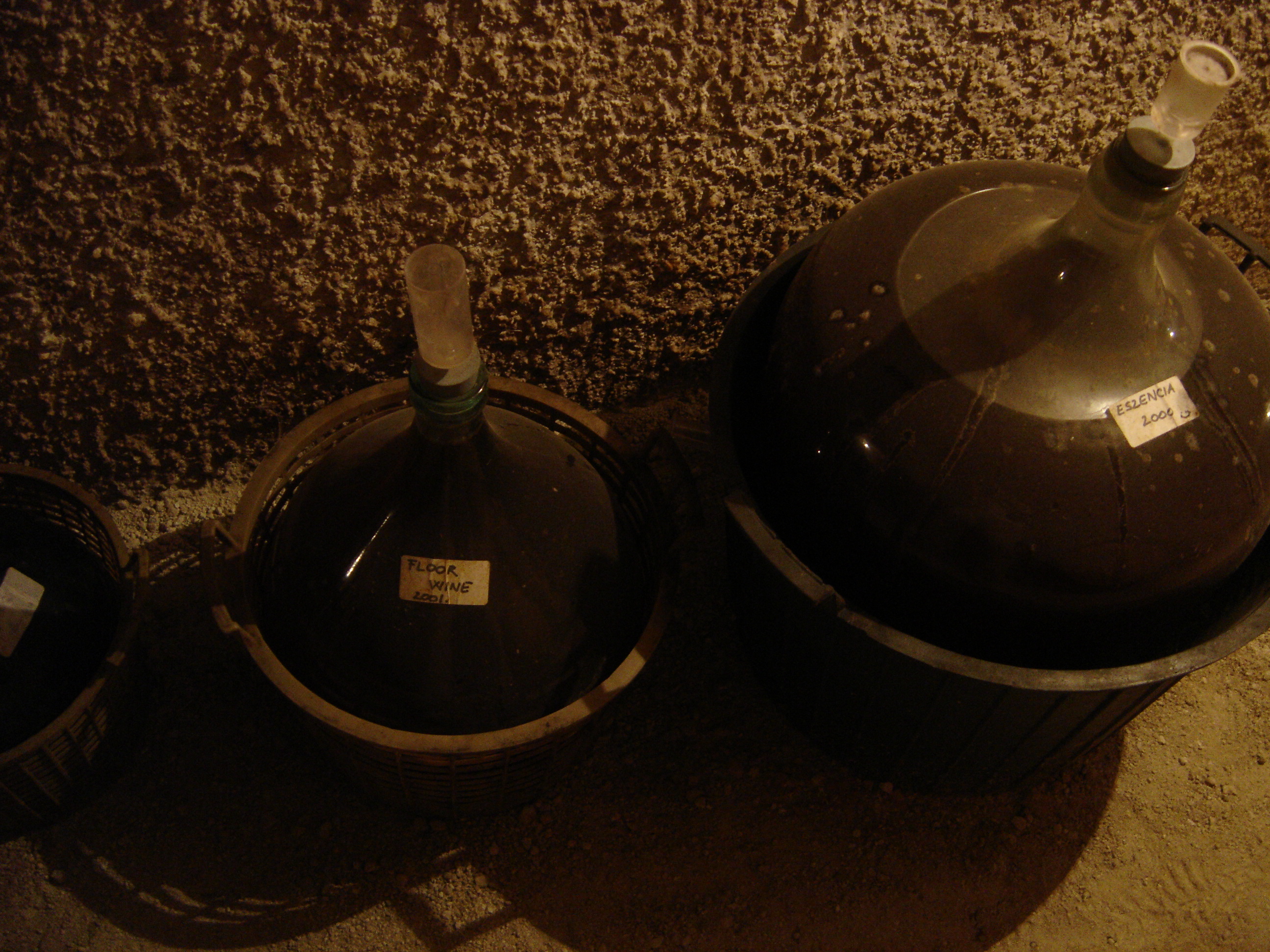2013 Tokaj auction wines – full tasting notes
Posted on 17 April 2013
After my sneak preview of the première Tokaj wine auction, here are my full tasting notes and assessments of 20 of the 22 auction lots (2 of the wines I tasted were subsequently withdrawn from the auction and replaced with others I didn’t taste). Each note starts with the winery’s own presentation note (in italics) followed by the price estimate. Please note: the estimate is per barrel (136 liters), I refer to the higher estimate price per bottle in my own tasting note which constitutes the last paragraph of each entry.
BUDAHÁZY PINCÉSZET KABAR 2012
Sugar: 0 g/l Alcohol: 14.5%
The grapes for this wine were harvested on 7th September 2012. After destemming and pressing the must was allowed to settle for a day before spontaneous fermentation in stainless steel. After racking, the wine was matured in stainless steel. Estimate: 1 600 – 1 800 €
Peachy and spicy, this shows the almost Viognier-like nature of Kabar, a specialist Tokaj crossing. It is also much broader and fleshier than your typical dry Tokaj Furmint. The spiciness and herbiness is somewhat conservative in style, making me think of some old age Hungarian whites. It is no shy wine but is already quite approachable at this stage and should drink well for 4 or 5 years, if not more: there is a subtle undercurrent of Tokaj acidity that adds interest. Rustic but interesting, and fairly priced. 86–87
DISZNÓKŐ FURMINT HEGYMEGI-DŰLŐ 2012
Sugar: 1.2 g/l Alcohol: 12.8%
The Hegymegi Vineyard is a plateau, a stony and gravel clay area, one of the highest on the estate. This terroir is less suited to making sweet wines but is exceptional for dry wines, especially in hot vintages. 2012 is the second vintage when we have selected grapes to vinify separately. We made only two barrels of this wine. It fermented and is ageing in one French barrique. Only the lot for the auction will be bottled separately: 1 Gönci barrel. Estimate: 1 850 – 2 100 €
Spring freshness in the glass with subtle aromas of apple, hawthorn and maybe lilies, this is a limpid, crisp style of Furmint with a conservative approach to ripeness (alcohol is a modest 12.8%) that is coupled with good fresh acidity. Marzipanny oak is still much in evidence, and I wouldn’t drink this before mid-2014. I really like this wine, which has both appeal and style, though it is not the most structured and the oak is a bit heavy at the moment. At an estimated 11.50€ per bottle this is clearly one of the bargains of this auction. 89+
FÜLEKY KIRÁLY FURMINT 2012
Sugar: 3 g/l Alcohol: 13.5%
Our vineyards in Mád are at mid-slope on the east side of the Királyvineyard. The 20-25 year-old vines in these plots have an excellent supply of nutrients and water, have good air movement, and produce well. Every year we harvest good quality, healthy bunches with beautiful individual aszú berries from this plot. This is why we harvest in several stages, selecting carefully each time. On 26th September, a lovely warm autumn day, we picked the healthy grapes for this wine. After one-and-a-half days of settling, we fermented the must in four one hundred litre barrels. Part was blended into the estate wine. We are aging the Confrérie wine on its fine lees in a separate barrel. It is flavourful and aromatic with feisty acidity, and has good ageing potential. We will bottle it in spring this year. Estimate: 2 900 – 3 250 €
Ripe and spicy, this Furmint is representative of the dry warm 2012 vintage. At the moment both the aroma and flavour are dominated by oak, but there is no denying the serious substance underneath. Interestingly the acidity is soft and ripe, not always a case with Furmint, and consequently the wine is smooth and broad, with an almondy flavour. Needs at least a year for the oak to integrate and should cellar for a decade. Very good wine. 87–88
ROYAL TOKAJI FURMINT 2474 2012
Sugar: 4 g/l Alcohol: 13.8 %
The grapes were grown on the southeast slopes of the Szent Tamás Vineyard on vinestocks over thirty years old. Our final harvest from these vines, this will be the only individual lot from this plot ever to be sold. Thanks to the hot vintage the grapes were harvested in mid September. The health and quality of the grapes were perfect for this wine, which was fermented and aged in 500-litre Hungarian first- and second-fill oak barrels. Estimate: 2 900 – 3 250 €
My barrel sample was still hazy and clearly in the making but the appley aromas was reasonably clear, and very Furmint-like. It shows what this grape can do so well: a combination of freshness and weight. The use of oak is quite deft, never dominating the fruit. There is a mild alcoholic uplift on the finish but nothing alarming. Impressive how this behaves in the open bottle: stays tight and fresh, almost mentholly. Has personality and outstanding potential. The estimated 18€ per bottle is a good price. Very good length. 90+
SZENT BENEDEK KÖVESHEGY FURMINT 2009
Sugar: 1.2 g/l Alcohol: 12.34%
Every year we give a unique number to the individual wines and musts at harvest time. In the 2009 vintage we assigned the number 112 to the must pressed from grapes grown on the well-established vines in the narrow rows on Köveshegy. It was already outstanding, showing unique notes during fermentation, thus we decided to mature the wine on its own, to allow it time to express the individual character of the vineyard. We made only one barrel of this wine: a second-fill 220-litre Szerednyei barrel. The wine was racked twice. After clarification, it will be bottled in spring 2013, without filtration. Estimate: 2 900 – 3 250 €
Showing very young at this stage for a 2009, with oak notes (and it does show some of that controversial unseasoned green Hungarian oak) still on top of rich golden apple and Tokaj spice. There is a bit of minerality underneath. Showing structured and juicy this is still very backward, perhaps a little lean where one would like more flesh on the bones, but it is a legitimate style of terroir-driven Furmint and should improve. 86–87+
SZENT TAMÁS PINCÉSZET SZENT TAMÁS VÁLOGATÁS 2012
Sugar: 2 g/l Alcohol: 14%
This is a limited production wine made from selected grapes from the Nőtelen plot of the historic Szent Tamás Vineyard. Estimate: 4 900 – 5 500 €
Well-used oak and restrained richness on this continental yet assertive wine. While the nose, with its green apple ad celery, is typical Furmint, the malolactic fermentation adds an unusual touch to the palate flavours which veer towards butter and oil. The subtle spiciness bodes well for complexity and length is very good. It is a potent wine with over 14% alc., which will keep well but needs to be served at the right temperature to remain balanced. If anything, the malolactic makes this a somewhat surprising wine for the open-minded, in the Furmint context. 87–89
SZEPSY NYULÁSZÓ 58 2012
Sugar: 5 g/l Alcohol: 14%
Parcel 58 lies on the SE side of the 3043-m2 Nyúlászó Vineyard, under the ridge. Planted in 1928, the vineyard displays many types of Furmint that are cordon-trained at mid-height. Subsoil is many-layered of broken quartz tuff, rhyolite pumice, rhyolite tuff and pyroxene andesite (at a depth of 7 m). The gaps between the solid rocks are filled with montmorillonite, kaolinite, illite, orthoclase and zeolite. The fruit-to-leaf ratio here is continually tuned by István Szepsy himself from the end of May to the harvest. In 2012 the harvest of 100% healthy, yellow bunches under 120g was on 24th September. Crushed and destemmed, there was then one night of maceration. After settling the must fermented in a 300-litre second-fill barrel. Racked off and sulphur added, the wine is ageing in a 220 l barrel. Estimate: 4 900 – 5 500 €
A ravishing deep golden colour. Somewhat reduced at this stage, it already shows considerable aromatic power. The volcanic soil is very evident. Then this becomes less mineral on the palate which is oak- and malolactic-driven, broad, rich, almost caramelly. It will be a controversial wine to Furmint purists, but from an international perspective this is a perfectly valid style that will just require extended cellaring. It vaguely made me think of some top South African Chenin Blancs. Length is very good, alcohol medium to high, acidity sufficient but not to the fore. 90–92(+)
SAMUEL TINON SZENT TAMÁS FURMINT 2012
Sugar: 3 g/l Alcohol: 12.6%
For a passionate winemaker, the geological complexity of Tokaj is a very interesting matter indeed. This Dry Furmint is intended to be a photograph of Tokaj’s most famous terroir, Szent-Tamás. The winemaking is “rapid” and allows the winemaker to catch the character of this very special plot. Harvested in September and presented in April, this wine has had very little intervention and expresses the purity and the traits of Szent-Tamás as well as the vintage 2012. Estimate: 3 850 – 4 350 €
Darker coloured than most Furmints on this tasting this has an interesting almondy, nutty whiff of Tinon’s unique speciality, the Dry Szamorodni. To those unfamiliar with it, it will almost resemble a Jura Savagnin. On the palate there is a very nice progression from juicy apple towards a richer, spicy, again nutty finish which is sustained and satisfying. This is a very idiosyncratic Furmint and I would love to follow its evolution. Excellent wine. And fairly priced too. 91–92+
KIKELET VÁTI-DŰLŐ HÁRSLEVELŰ 2012
Sugar: 4 g/l Alcohol: 14.5%
Váti is among the most characterful of the vineyards in Tarcal and gives exceedingly high quality dry wines with strong structure every year. South-facing at 200 m above sea level, the 30 year-old vines are on volcanic dacite bedrock with a thin layer of loess. The wine fermented and aged in the barrel. The 2012 vintage offers beautiful maturity with a long fruity yet mineral finish and great acidity. During bottle ageing wines from this vineyard typically develop a mineral, flint character. Estimate: 2 900 – 3 250 €
So different aromatically from the Furmints, this smells of juicy tangerine with a refreshing sour twist. With time in the glass, the airy, dried-herby, elegant minerality of loess is emerging. For an oak-fermented and -aged wine this almost shows no wood, and is acid-driven with fantastic punch and linearity. It is less of a blockbuster than some of the Furmint lots on this auction but is a beautiful expression of both the grape and terroir. One of my three favourite dry wines on this auction, this is a steal at an estimated 18€ per bottle. In Alsace it would cost double that. 91–94
SAMUEL TINON SZÁRAZ SZAMORODNI A NAGYMESTER BORA 2006
Sugar: 2.5 g/l Alcohol: 13.5%
This may be the great dry wine from Tokaj, known for centuries in Poland and in the countries of northern Europe. It may be the only dry wine crafted by Botrytis. This may be the reason why the Comte de Chalon came from Jura to spend his life in Tokaj. This wine gives rise to a full range of emotional sensations in your body, just like the classical Tokaji Aszú. Tokaji Dry Szamorodni may well have all the qualities to be an elite success in the 21st century. A wine with deep roots and no equal. Estimate: 9 600 – 10 800 € =40€/500ml
Very aromatic with almonds, green walnuts, parsley, beaten egg, this continues on the palate with a lean, softly dry profile before finishing on a spicier, almost rancio-like sherried note. This is a very unique style, that only partly revisits the tradition of Tokaj’s Dry Szamorodnis (less oxidative and violent than most of the historic ones I have tasted) and partly is inspired by Jura Vin Jaune (but is more aromatic and fruity than a typical jaune). I’ve followed Samuel Tinon’s Szamorodni since the very beginning when tasting 40 barrel samples of the first vintage from barrel, and I positively think this will be his best, most harmonious version to date. 93–94
GRÓF DEGENFELD ÉDES SZAMORODNI 2011
Sugar: 88 g/l Alcohol: 12.5 %
We harvested for the 2011 Sweet Szamorodni between 1st and 15th November. It is a blend of Furmint, Hárslevelű, Zéta and Kövérszőlő varieties. It fermented in stainless steel with cultured yeast. We racked it into used wooden barrels for ageing in April 2012. Pale yellow. Tropical fruits and spices appear in the nose. Apricot, pineapple and oregano dominate the palate, complemented by the chocolate aromas of noble rot. Its pleasant acidity is already well-rounded and balanced by the sugar remaining after fermentation. A dessert wine with a long finish. Best enjoyed at 9-10°C. Estimate: 2 800 – 3 150 €
The bouquet is not very sweet but is instead very spicy: curcuma and caraway come to mind as does dried rosemary. The evolution in the glass is towards sweet syrupy citrus. Slightly elevated volatile acidity is probably a price to pay for the rich aroma. Medium sweet on the palate, I see this more of a main course wine – think canard aux oranges – than a sweet dessert treat. I salute Gróf Degenfeld for so patiently championing the Szamorodni category: one that has both a respectable tradition and a utilitarian usefulness in the 21st century. This is not a great wine, but is so fairly priced at the 11€ estimated that I would myself buy it. 86–87
HOLDVÖLGY ÉDES SZAMORODNI FURMINT 2011
Sugar: 118 g/l Alcohol: 12.8%
Incredibly concentrated bunches were harvested with a potential alcohol of around 20% in the Becsek and Kakas vineyards in a vintage with minimal botrytis. The bunches were selected with particular care first at the vine, then at the grape sorting table. After destemming and maceration we obtained a must rich in acids and sugar that has matured into a wonderful wine. It will not be released alone but we decided that this exceptional Sweet Szamorodni is HOLDVÖLGY’s “present” to this extraordinary event. Estimate: 10 100 – 11 300 €
Medium deep on colour, this is already very aromatic despite the young age: peaches, pineapples and mangoes. A soft botrytis tone adds complexity instead of dominating. The taste is round with medium sweetness and no excess of structure. Finishes more mineral. A good wine, although slightly lacking personality and presence at this stage; I don’t find it a particularly good QPR at the estimated 41€ per bottle.
DISZNÓKŐ ASZÚ 5 PUTTONYOS HÁRSLEVELŰ 2010
Sugar: 148 g/l Alcohol:12.5%
Although Disznókő has a significant area of Hárslevelű (around 30 ha), in the Kapi and Hangács vineyards – Aszú wines exclusively from this grape variety are rarely made since larger quantities of aszú grapes develop only in wetter vintages. 2010 was just such a year, bringing intensive botrytisation that has given particularly fresh, flowery and spicy aromas to the Hárslevelű, in itself a fragrant variety. A wonderfully rich Aszú wine. The aszú berries were soaked in new wine. The wine is still ageing in the barrel. Only the lot for the auction will be bottled separately: one Gönci barrel. Estimate: 7 600 – 8 500 €
I have never had a Disznókő wine that would be unpleasant to drink and this one will be no exception. At age 2 it already hints at very good complexity with brown sugar, ripe apricot and peach, developing a very pungent citrusiness, while the lemony acidity (all 10g of it) on the palate is quintessentially Disznókő and gives the wine a very strong backbone. If you like your 5 puttonyos a little drier to accompany some adventurous food such as Asian or washed rind cheese, this one is for you. In fact it is not showing so much richness for its analytical data (148g residual sugar). The structure and balance are incredible. A wine lover’s wine, this is very serious stuff. 92–95+
TOKAJ PAJZOS ASZÚ 5 PUTTONYOS 2009 NOBLESSE
Sugar: 220 g/l Alcohol: 10.5%
After 3 years’ maturing in wood, this Tokaji Aszú from the Pajzos Vineyard will be bottled in spring, 2013. Notes of quince, honey and peach. Estimate: 7 600 – 8 500 €
This is not ready to drink or fully assess, showing some mild reductive funky banana bonbon on the nose, coupled with botrytis mushroominess. It will clearly reemerge, as shown by the palate which has the right balance between fruity sweetness, extract and freshness. Regarding the latter, the acidity is not record-high for a sweet Tokaj (logical for 2009), and there is a again a syrupy impression from the 220g of sugar. This will appeal to those less experienced with Tokaj, being approachable, rich and sensual. ~92
HÉTSZŐLŐ ASZÚ 6 PUTTONYOS 2010 ’7-ES HORDÓ’
Sugar: 200 g/l Alcohol: 12%
Along with saffron in the nose, you can discover lovely and intense fruity notes, primarily apricot and mandarin. On tasting you feel this is a rare and at the same time a serious wine. Young and matured in fresh wood, it fills the palate with notes of dried fruits, as well as caramel, walnut, sesame and vanilla. From the 2010 vintage it has excellent and elegant acidity that perfectly counterbalance the high residual sugar. A long finish, this wine has serious ageing potential. Estimate: 12 500 – 14 000 €
Still very young with a volatile whiff, and heavy on oak, I guess this should be left in peace for another 2–3 years. Showing the typical taut structure of 2010, with the acidity almost eating the entire 200g of sugar. Left in the glass this develops aromatic complexity with marzipan, citrus and quince. Finishes dry. A tour de force in winemaking, this shows the iron-cast acidic structure of the old-age Tokaj even with a fairly modern, reductive style. (90–93)
TOKAJ NOBILIS ASZÚ 6 PUTTONYOS 2010
Sugar: 220 g/l Alcohol: 10%
2010 was an exceedingly unusual year; a lot of rain fell during the very cool summer. Botrytis and shrivelling began very late on the berries, and beautiful aszú berries only developed on the higher plots. We had to select the berries extremely carefully to ensure only those highly concentrated were processed. We were able to make only one single barrel (220l) of Aszú wine from our 6 ha of land. Both the base wine and the aszú berries are Furmint. Exceedingly citrus in the nose and palate. Defined acidity typical of the vintage is balanced by the high sugar content. This Aszú can be matured for an extremely long time. Truly unique. Estimate: 14 400 – 16 200 €
Not very dark in colour, this is a Tokaj Aszú in the making that shows the 2010 vintage as a challenge rather than as a handicap. The lemony acidity is very high and there is almost a whiff of green geranium reduction adding to the sense of tension and drive. Then deep under the acid, a core of fleshy quincy fruit is buried waiting to unfold over the years. The aromatic evolution is very good. An intellectual style of Aszú but one that eventually grows on you. 93+
BARTA ASZÚESZENCIA ÖREG KIRÁLY-DŰLŐ 2007
Sugar: 300 g/l Alcohol: 9%
Only one barrel was made of the first Aszú wine from the Öreg Király Vineyard after it was brought back into cultivation. The virgin produce of this vineyard. Spontaneous fermentation in the barrel and aged for over four years. Expected bottling in spring 2013. Estimate: 14 900 – 16 700 €
A syrupy amber-reddish in the glass, this is still in its violent, all-over-the-place adolescence. A supremely rich wine, it tastes soft with flavour of fruit gelée and the acidity is very much in the background. Certainly it is less taut and poised than some other Aszú lots on this auction, although aromatically, with its spicy, raisiny, bready, 200% botrytis-driven aromas it is less modernist than most, too. Hard to resist the sheer intensity of fruit. A competition Aszú-Eszencia. 94–95+
OROSZ GÁBOR ASZÚESZENCIA 2002
Sugar: 400 g/l Alcohol: 6%
The first wave of botrytisation during a dry period in mid-September brought extremely concentrated aszú berries with higher than usual sugar levels and equally high acidity in a year when the quality of later aszú grapes would be marked by the diluting effect of heavy rains later that autumn. We picked some 200 kilograms of these exceptional berries which we macerated in a mere 120 litres of base wine to create this exceptional Aszúeszencia. Estimate: 13 100 – 14 700 €
Deep beige in colour, this is an uber-eszencia that effectively goes beyond any classifiable wine category. It tastes like fermented Eszencia, which in my book, and I hope Tokaj aficionados will understand what I mean, is not the same as Aszú-eszencia. This is also confirmed by the analytics with the wine having just 6% alc. alongside masses of fermentable sugar: likely a large portion of Eszencia was added to Aszú long after fermentation.
The searing appley freshness is admirable when you realise this is composed of 40% sugar, more than you could ever add to a dessert. For a wine triple the concentration of any Château d’Yquem, the estimated 54€ bottle price is a ridiculous bargain. 95–96
DERESZLA PINCÉSZET ESZENCIA 2010
Sugar: 710 g/l Alcohol: 2%
We harvested the aszú berries by careful selection. The nectar that drips out under the weight of the berries while they are stored until vinification has matured in glass demijohns to this day. The nose evokes dried apricot “spiced” by citrus freshness and a hint of full-bodied earthiness. Viscous yet clean, balanced and delicate, with minerality appearing on the finish. Estimate: 9 300 – 10 500 €
Tasting real Eszencia (Natúr-eszencia, or Nektár, which is a right word) is never easy. Aromatically this is at the same time, unusually, potent and uncomplex: a true essence of golden apple and grape, with some added tea-like botrytis spice. It also magnifies the high acidity of the 2010 vintage into an incredible dimension of crispness that almost suffices to fully balance the whopping 710g of residual sugar. Very high acidity. Over the limited time I have managed to keep this in the glass, there more botrytised complexity appearing. Mindblowing structure.
SAMUEL TINON ESZENCIA 2000 JEAN-PAUL II
Sugar: 800 g/l Alcohol: 1%
This is the equivalent of bees’ royal jelly. Eszencia is the juice released by the exceedingly concentrated aszú grapes which are hand-picked berry by berry. 2000 was a year blessed with dried grapes full of sugar. Samuel Tinon has chosen the Tokaj Wine Auction to release his Eszencia. Estimate: 12 000 – 13 500 €
The ageing of eszencia, traditionally kept in glass demi-johns is so slow that this 13-year-old example only shows a bit of evolution towards black tea and mushrooms. The 2000 vintage shows in the moderate acidity and round flavour that is almost a perfect circle, so to speak. The light black tea flavour on the finish is more intense than in any black tea I’ve brewed. Very long-lasting, among Eszencias this is a powerful monodic song, sung with the piercing voice of a child, rather the the grounded symphonic poem of some other examples. This is very expensive at the estimated 500€ per half-bottle but is like no other liquid on this planet.
You can also see tasting notes on the same wines by winemaker Nicolas Godebski and Hungarian blogger TáncolóMedve .
Disclosure: My day trip to Budapest to taste the auction lots was paid for by the Tokaj Confrérie.


